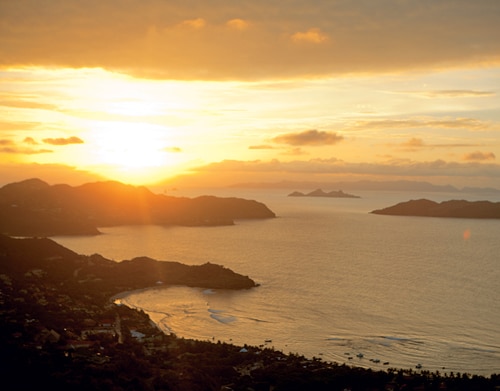Is There Really A Green Flash?
I've never seen bigfoot, a unicorn or the green flash. You know the green flash. That alleged burst of color (apparently green) that shows up (supposedly) for a millisecond as the sun vanishes into the ocean. It's the stuff of legends among Caribbean travelers. As far as I'm concerned, it's a delusion.
That said, here I sit on a beach in St. Kitts. Next to me is a middle-aged couple spackled with sunscreen. We focus on the horizon, waiting for that micro-moment, when the woman decides to tell me, "We saw it on our honeymoon. It was magical!" Her husband nods along in time and describes it succinctly: "It was green." "Where were you?" I ask.
"At a beach bar in Jamaica," she says.
I've found that most folks who claim to have experienced this elusive event have done so during or right after happy hour. In fact, a good number of liquid establishments lure in the island traveler with a drink called the green flash.
If you listen to Mike Finneran, who works for the atmospheric science division of NASA, he'll tell you that the flash is an event caused by refraction and scattering of light. In layman's terms, it's said to be the process of atmospheric particles bending the visible spectrum of light, much like a prism, allowing all other colors except green to fade first from view. This natural occurrence leaves the impression that the top of the sun has "flashed" into a green halo before stumbling off for the night.
"I've never seen it," Mike admits. "I don't even know anyone who's seen it."
I'm with him — not buying it. But because so many Caribbean travelers swear they've seen it, I'm here on St. Kitts to make one final attempt.
So I freeze my face and strain every tiny eye muscle to stay focused on the sun as it drops. My retinas burn. And then ... the sun slips unceremoniously into the sea. Nothing. I wipe tears from my cheeks. "I saw it!" a man down the beach shouts, spilling his drink in the sand. Dammit.
